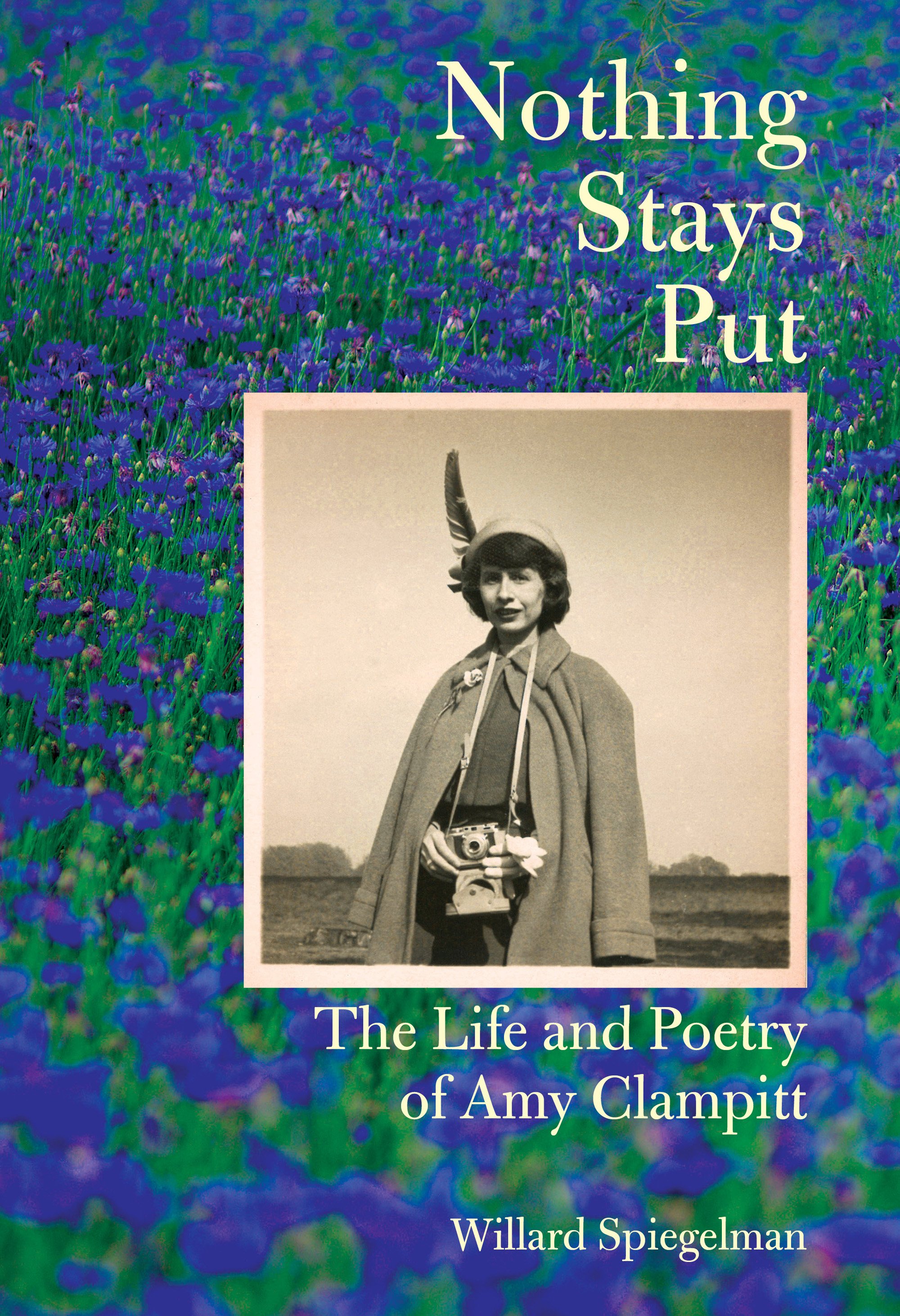A Beloved Poet
WILLARD SPIEGELMAN BRINGS AMY CLAMPITT TO LIFE IN A NEW BIOGRAPHY
By Laura Mars // Photos Courtesy of Willard Spiegelman
THERE ARE SEVERAL compelling reasons to attend Willard Spiegelman’s lecture at The Mount, where he will talk about his just-released book, Nothing Stays Put: The Life and Poetry of Amy Clampitt.
Those reasons include Clampitt’s gorgeous poetry, how she found her way from Quaker Iowans to New York’s literary circle, her path to the Berkshires, and her parallels to Edith Wharton (turning away from typical roles, finding success later in life, loving the natural world, and a compelling urge to write).
Clampitt found success at age 58, not for the prose she wrote throughout her life, but for her poetry (another interesting similarity to Wharton, whose success came from her novels, not the poems she wrote as a young woman). Clampitt’s debut collection of poems, Kingfisher, was published in 1983 and started a whirlwind of appearances and awards including the 1992 MacArthur Foundation Award. The money that came with it allowed Clampitt and longtime partner Harold “Hal” Korn, law professor at New York University and Columbia University, to buy a house that was a little over a mile from The Mount, Edith Wharton’s summer home.
The couple fell in love with Lenox on an overnight visit at the home of their friend, Karen Chase, en route to Maine. (Clampitt and Chase met as residents at the Bellagio Center Residency in Italy and bonded over Bob Dylan.)
Clampitt was in Maine when Chase called her about her winning The MacArthur grant. Clampitt’s response was “Find me a house!” The Cottage, as they called it, was the first home that either Clampitt or Korn ever owned, and they loved everything about it, especially the natural surroundings and the proximity to Lenox and The Mount.
“She told me to read Wharton’s Summer because it was the best one,” recalls Chase, “and she was right.” Chase and Clampitt often went on what they called junking expeditions to thrift shops throughout the Berkshires to furnish the Cottage, and that’s how Chase found Clampitt’s wedding gown for her marriage to Korn after a 26-year courtship, just months before Clampitt passed away.
What Clampitt loved most about the Berkshires was the Cottage. “They absolutely loved owning a house,” recalls Chase, “and took great pleasure in the large backyard and the birds.” Clampitt died in 1994 at age 74, a Berkshire resident for 18 months. Her ashes are scattered at the Cottage.
Korn put the Cottage into a trust before he died in 2001. In 2003, trustees of the Amy Clampitt Fund, which includes Chase, created a residency program for writers and poets at the Cottage for six or twelve months.
Spiegelman—author, editor, and literary critic—undoubtedly knows Clampitt better than any living person. He met her around 1984 when he was teaching at Southern Methodist University in Dallas and saw her occasionally for dinner and poetry events. His 1997 review of her book Collected Poems caught the attention of Korn and prompted Spiegelman’s reputation as somewhat of a Clampitt scholar. When the Cottage became a residency in 2003, Spielgelman was the first to stay there, putting together a collection of her letters that came out a few years later.
“In the preface to that book,” he recalls, “I said that a biography of this woman could never be written because she left so little evidence. Flash-forward to 2018 when I was asked to write a biography. I had never written a biography but had just retired, so I did it. I didn’t know Amy very well when she was alive, but I know her a lot better now.”
And so do I. Spielgelman’s book engages from the start. I fell in love with her work. When I came to a poem, which was often, I found myself reading it out loud, all Aha! moments. Her life story was equally absorbing, made more so by the author’s clear sense of affection. “I fell gradually and almost unthinkingly into the habit of calling my subject Amy when portraying the woman who is now gone. I try to say Clampitt when I refer to the artist whose work remains,” he writes in the Prologue.
Spiegelman says that Clampitt would be thrilled by how her house is being used. Chase agrees. I visited the Cottage to meet with poet Ama Codjoe, the 32nd writer-in-residence whose first book of poetry, Bluest Nude, was published in September. I was struck by the profound sense of quiet and comfort—the fireplace, big kitchen, photos of the Korns, and so many books! It’s exactly what I expected from the book’s thoughtful descriptions of not only the Cottage, but the beloved backyard, which still feels like a sanctuary.
“The thing about this residency is the house itself,” says Codjoe. “You get the opportunity to unplug and commit to the quiet and the work for six months or a year. Especially coming from New York, that’s not a thing. My intention was to respect the opportunity and abide in the quiet and the space, as opposed to just transferring my life here.”
Willard Spiegelman will speak at The Mount on July 10 and 11. For more information on The Mount and the Summer Lecture Series visit edithwharton.org.



